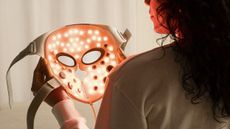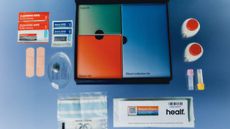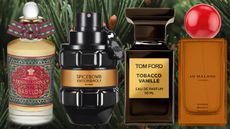Wellness
The latest Wellness breaking news, comment, reviews and features from the experts at T3
Explore Wellness
-

5 wellness gadgets you need to start 2026 feeling your best
New year, new you – after all
By Lizzie Wilmot Published
-

Best cheap mattress deals for January 2026: shop sales from Emma, Simba, OTTY and more
Need to upgrade your sleep setup? Check out the best cheap mattress deals to shop now
By Bethan Morgan Last updated
-

Simba mattress deals, sales and discount codes for January 2026
The best Simba mattress deals is here to help you save money on a new Simba sleep set-up
By Bethan Morgan Last updated
-

Nectar mattress sales, deals and discount codes for January 2026
Looking for a Nectar mattress deal, discount code or freebie offer? Step this way...
By Bethan Morgan Last updated
-

Eve mattress sales, deals and discount codes for January 2026
Looking for an Eve deal or sale? Now is the time to shop, with up to 60% off & price drops on the whole range
By Bethan Morgan Last updated
-

Emma mattress sales, deals and discount codes for January 2026
Looking for an Emma mattress deal? Find all the best Emma sales, deals and discount codes in this guide...
By Bethan Morgan Last updated
-

DreamCloud sales, deals and discount codes for January 2026
After a DreamCloud deal or discount code for this month? We've found the best discounts for you, in both the UK and US
By Bethan Morgan Last updated
-

Brook + Wilde sales, deals and discount codes for January 2026
Find the best Brook + Wilde sales and deals for money off your next mattress and sleep accessory
By Bethan Morgan Last updated
-

5 signs your mattress is dirty after Christmas – and how to reset it
Upgrade your sleep in 2026 with these mattress reset tips
By Bethan Morgan Published
-

Didn't get an LED face mask for Christmas? These 3 options are still reduced in the January sales
Grab one before it's too late
By Lizzie Wilmot Last updated
-

I keep waking up in the night, but this hack has helped me fall back to sleep fast
This is the one sleep hack I’m bringing with me into the new year
By Bethan Morgan Published
-

I test men's fragrances for a living – these are my top picks from the early January sales
Hot picks from Ralph Lauren, Versace, Maison Margiela and more
By Sam Cross Published
-

I tried Woojer’s wellness mattress topper to improve my sleep and recovery – but was it worth the cost?
I slept on the Woojer MAT for weeks to see if it helped my sleep and restfulness
By Lucy Miller Published
-

Best hair straighteners 2025: for sleek, frizz-free hair
Our top picks for envy-worthy locks
By Lizzie Wilmot Last updated
-

6 superfoods you should be eating to avoid the winter flu, according to fitness experts
From black garlic to raw honey, these superfoods can boost your immunity this winter
By Bethan Morgan Published
-

Shark just launched its FlexStyle in a stunning burgundy winter edition
It would make the perfect Christmas gift for any beauty lover
By Lizzie Wilmot Published
-

Best electric shaver 2025: top grooming options from Braun, Philips and more
Reduce stubble to rubble with the best electric shavers from Braun, Philips and other brands
By Lizzie Wilmot Last updated
-

Best beard trimmer 2026: premium shavers for stubble, short and long beards
Find the best beard trimmers, clippers and shapers to maintain a well-tended beard or on-trend stubble
By Bethan Morgan Last updated
-

Best body groomer 2025: find the top manscapers on the market
Find the best body groomers and the best manscaping groomers for your back, torso, downstairs and everywhere else...
By Lizzie Wilmot Last updated
-

Best duvet 2026: snuggle up for a great night's sleep
Find the best duvets to snuggle up with, from down, wool, synthetic and beyond
By Bethan Morgan Last updated
-

Best wake up light 2026: sunrise lamps to wake you up naturally
Banish the morning blues with the best wake up lights, from Lumie, Philips, Beurer and more
By Bethan Morgan Last updated
-

Shark FacialPro Glow review: incredible at-home skincare with professional results
Does this clever skincare gadget deliver? (Spoiler: yes)
By Lizzie Wilmot Published
-

This ‘world’s first’ wellness mat relieves pain and improves sleep – but it’ll cost you
Woojer introduces the MAT, a wellness-driven mattress topper
By Bethan Morgan Published
-

3 walking meditations you need to try to beat the winter blues
These walking meditations help improve your mood and move your body for a mental health boost
By Kat Bayly Published
-

I tried Healf Zone’s at-home test, and was surprised by what nutrients I was deficient in
Healf Zone promises to improve my wellbeing – but is it worth the cost?
By Bethan Morgan Published
-

9 best Christmas fragrances for men: festive scents from Tom Ford, Maison Margiela, Burberry and more
Smell like Christmas with T3’s picks of festive fragrances and colognes
By Bethan Morgan Published
-

My favourite sleep app just got an AI-powered sleep coach – and I can’t wait to try it
Sleep Cycle just gave its app an AI upgrade that could drastically improve your sleep
By Bethan Morgan Published
-

Best pillow 2026: down, wool, bamboo and synthetic options to rest your head
Upgrade your sleep set-up with the best pillows for all budgets
By Bethan Morgan Last updated
-

Best Cyber Monday deals on men's fragrances and colognes live – snap up these bargains before the sales end tonight
Hand-picked deals from T3's fragrance experts, including Ralph Lauren, Tom Ford, Jean Paul Gaultier and more
By Sam Cross Last updated
